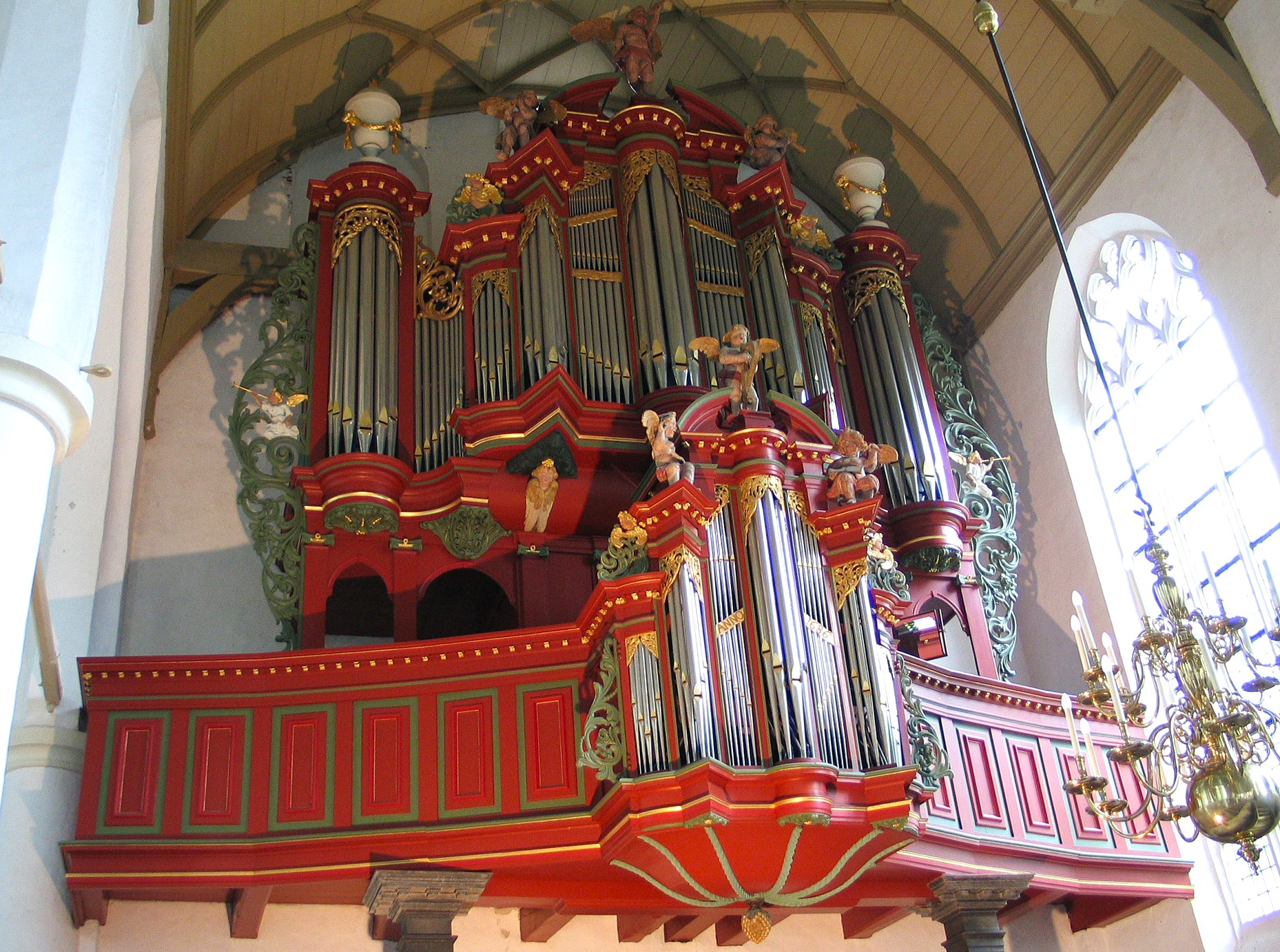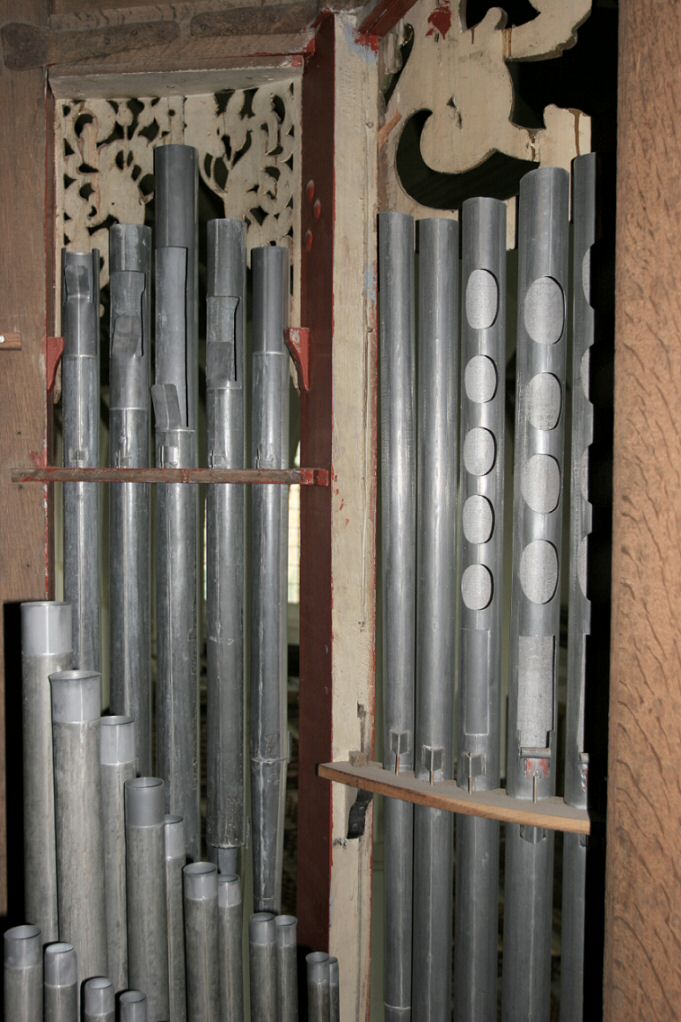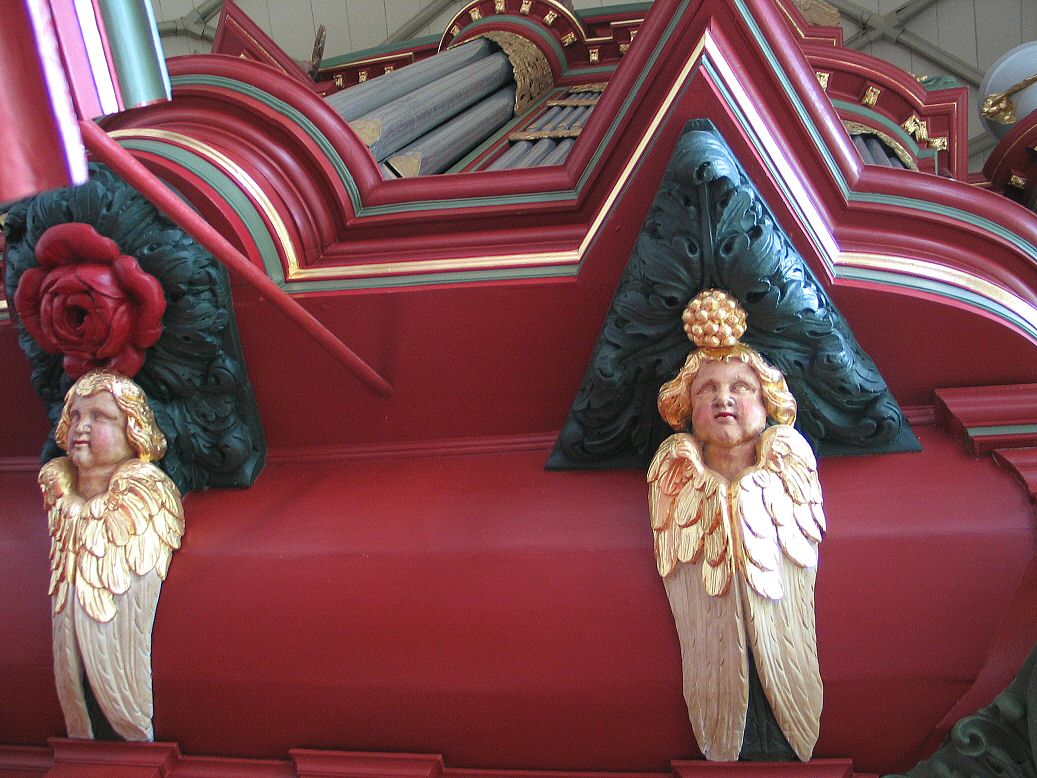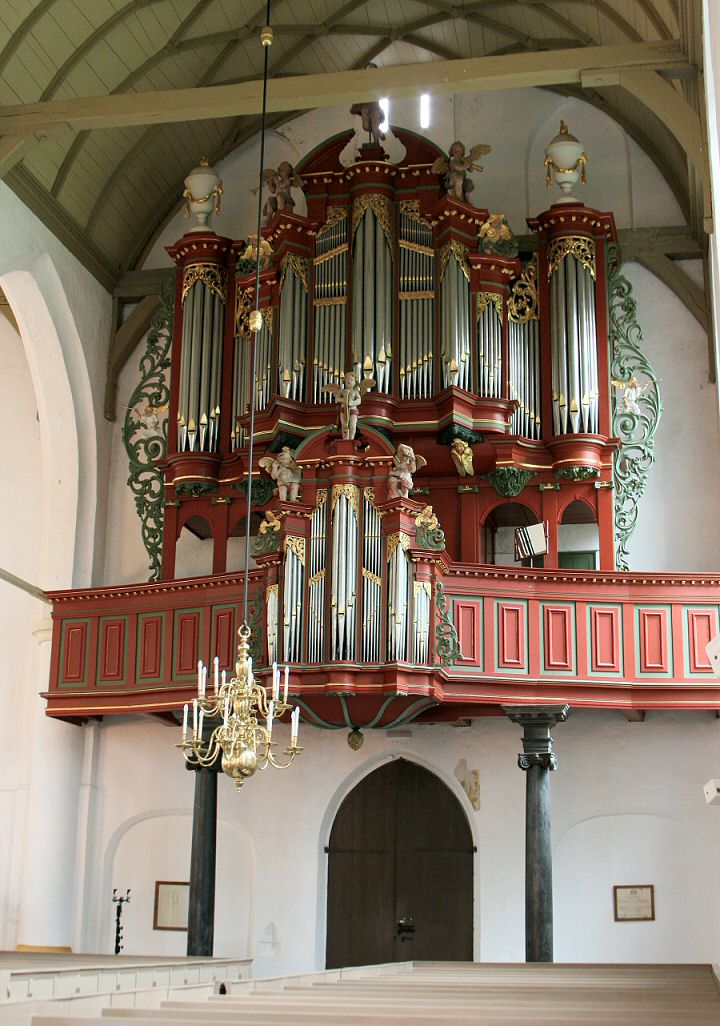Vollenhove, St. Nicolaas of Grote Kerk
| Builder | F. C. Schnitger |
|---|---|
| Year | 1720 |
| Period/Style | Baroque |
| Stops | 27 |
| Keyboards | 2+P |
| Keyaction | tracker/mechanical |
| Tuning | Werckmeister I at 420 Hz |
| Sampleset |
Available
 , sampled by
OrganArt Media
, sampled by
OrganArt Media
|
The Bosch/F.C. Schnitger organ, located in the Grote of Sint Nicolaas Kerk in Vollenhove, Overijssel, Netherlands, has undergone several modifications and restorations since its initial construction in 1686 and its substantial overhaul by Frans Caspar Schnitger in 1720. Frans Caspar, noted for possibly surpassing his father Arp Schnitger’s craftsmanship, was renowned for his work on significant organs such as the one in St. Michael's Church in Zwolle and the Van Hagerbeer organ in St. Laurenskerk in Alkmaar. In Vollenhove, he installed a new windchest in the Rückpositiv and added several labial and reed stops, likely adjusting the intonation and making extensions similar to those he later implemented in Alkmaar.
In 1860, Jan van Loo of Zwolle enhanced the organ by adding pedal towers on each side of the main work, integrating six pedal registers of such high quality that they closely matched the original Schnitger registers. These additions are still part of the organ today. Significant to this organ’s history is the preservation of its 1686 front pipes (Prestant), which survived numerous changes over the centuries. In 1977, the Van Vulpen brothers from Utrecht meticulously restored the organ to its 1720 condition, keeping the 1860 pedal registers and extending all pipes to return to the original pitch of A=415, tuning it according to Werckmeister I.
Today, the organ is celebrated for its rich Prestant tones dating back to 1686, the bright and clear acoustics of the church that provide a reverberation time of 4-5 seconds, and the quality of both Schnitger’s reed stops and the additional pedal registers. The organ is also noteworthy for its original Cornet register, a rare feature in Northern Netherlands and unusual in Schnitger organs, adding to its historical and musical significance.
In 1860, Jan van Loo of Zwolle enhanced the organ by adding pedal towers on each side of the main work, integrating six pedal registers of such high quality that they closely matched the original Schnitger registers. These additions are still part of the organ today. Significant to this organ’s history is the preservation of its 1686 front pipes (Prestant), which survived numerous changes over the centuries. In 1977, the Van Vulpen brothers from Utrecht meticulously restored the organ to its 1720 condition, keeping the 1860 pedal registers and extending all pipes to return to the original pitch of A=415, tuning it according to Werckmeister I.
Today, the organ is celebrated for its rich Prestant tones dating back to 1686, the bright and clear acoustics of the church that provide a reverberation time of 4-5 seconds, and the quality of both Schnitger’s reed stops and the additional pedal registers. The organ is also noteworthy for its original Cornet register, a rare feature in Northern Netherlands and unusual in Schnitger organs, adding to its historical and musical significance.
| Rugpositief | Hoofdwerk | Pedaal |
|---|---|---|
| Holpijp 8 VT | Prestant 8 VT | Subbas 16 VT |
| Prestant 4 VT | Bourdon 8 VT bas, disc | Prestant 8 VT |
| Fluit 4 VT | Roerfluit 8 VT bas, disc | Holfluit 8 VT |
| Nasard 3 VT | Octaaf 4 VT | Octaaf 4 VT |
| Octaaf 2 VT | Fluit 4 VT bas, disc | Trombone 8 VT |
| Woudfluit 2 VT | Fluit 2 VT bas, disc | Bazuin 16 VT |
| Mixtuur 4 ST | Octaaf 2 VT | |
| Sexquialter 2 ST | Mixtuur 2-4 ST | |
| Dulciaan 8 VT | Cimbel 4-6 ST | |
| Trompet 8 VT bas, disc | ||
| Vox Humana 8 VT | ||
| Cornet 4 ST |
Newsiedler Der Zeuner Tantz
0:00
0:00
Banchieri Dialogo
0:00
0:00
Buxtehude-Toccata F
0:00
0:00
BWV1027a-Trio G
0:00
0:00
https://www.organartmedia.com/de/bosch-f-c-schnitger
 Pipe Organ Map
Pipe Organ Map





